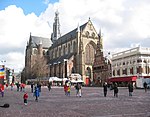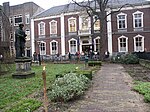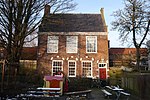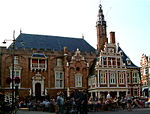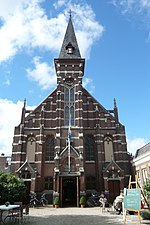Remonstrants Hofje
1773 establishments in EuropeDutch building and structure stubsHofjesRijksmonuments in Haarlem

The Remonstrantshofje is a hofje (courtyard surrounded by almshouses) in Haarlem, Netherlands. It is one of the hofjes in Haarlem that is traditionally used to provide housing for elderly people.It was founded in 1773 by Justus and Isabella van Leeuwarden on the site of the old Ursula cloister. The hofje has places for six women. The entrance of the hofje is in a remaining wall of the old cloister, and the old cloister chapel serves as the entrance hall.
Excerpt from the Wikipedia article Remonstrants Hofje (License: CC BY-SA 3.0, Authors, Images).Remonstrants Hofje
Ursulastraat, Haarlem
Geographical coordinates (GPS) Address Nearby Places Show on map
Geographical coordinates (GPS)
| Latitude | Longitude |
|---|---|
| N 52.383333333333 ° | E 4.6336111111111 ° |
Address
Ursulastraat 14-RD
2011 PN Haarlem (Haarlem)
North Holland, Netherlands
Open on Google Maps

